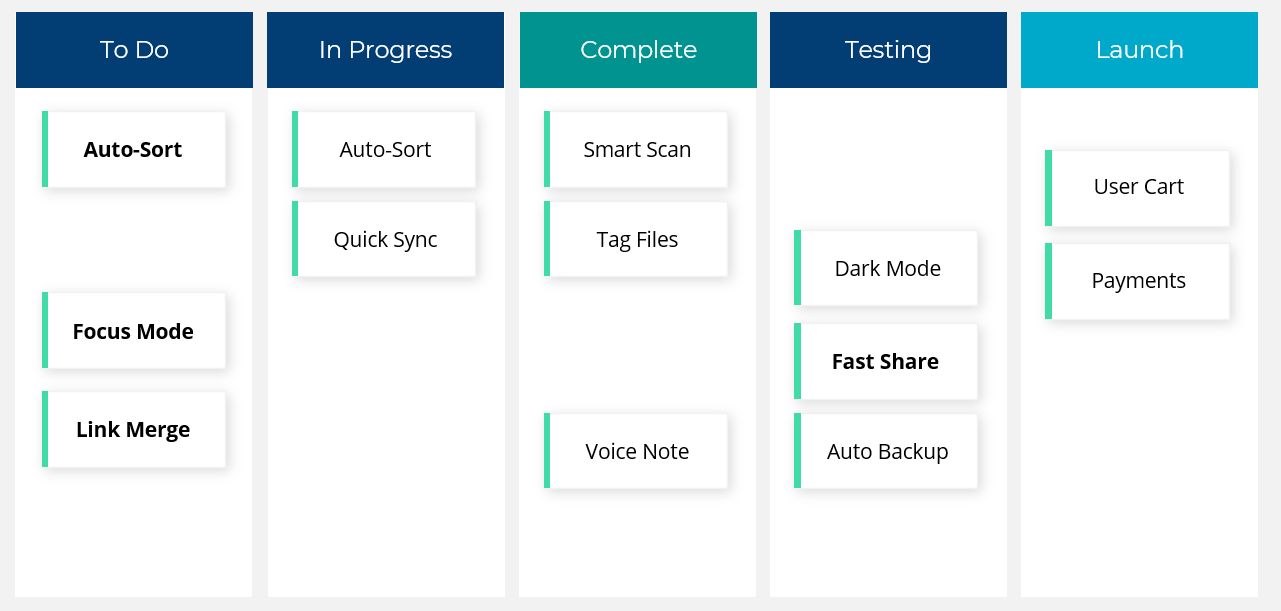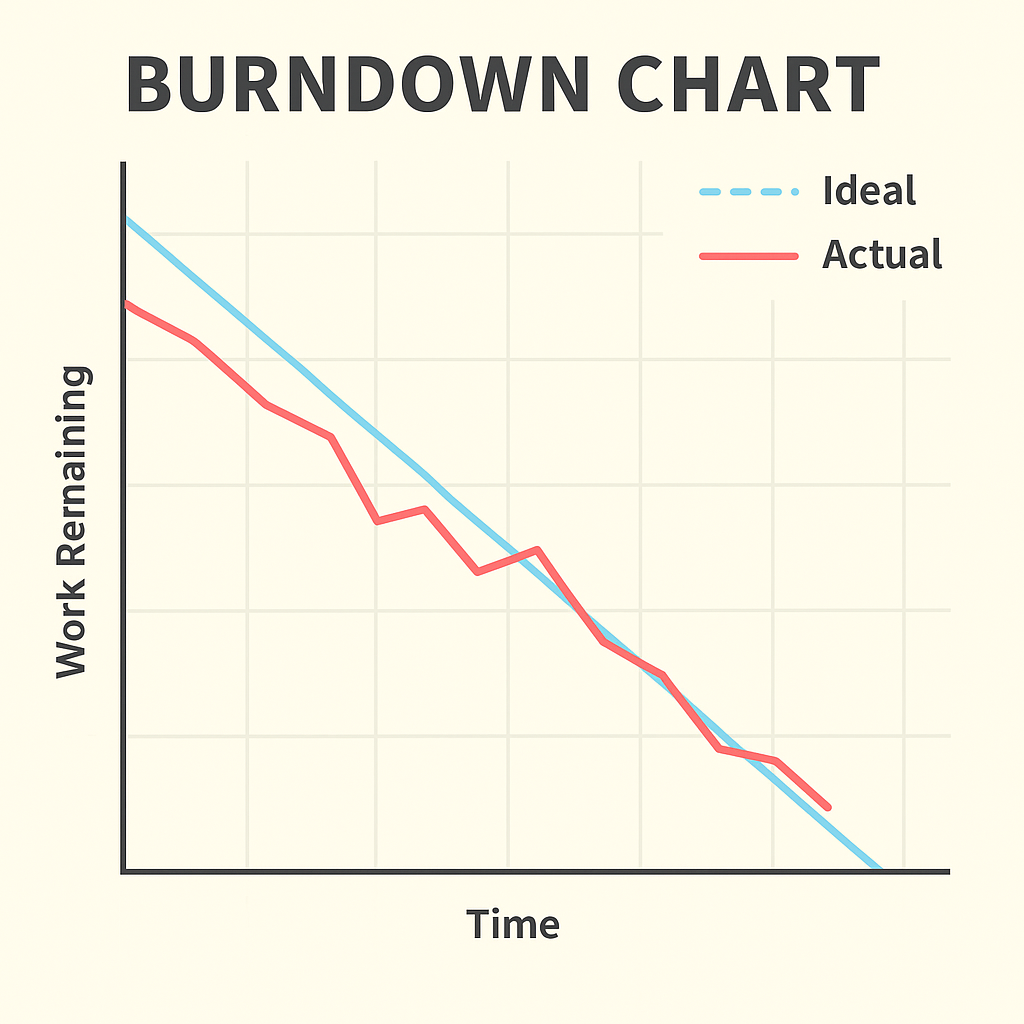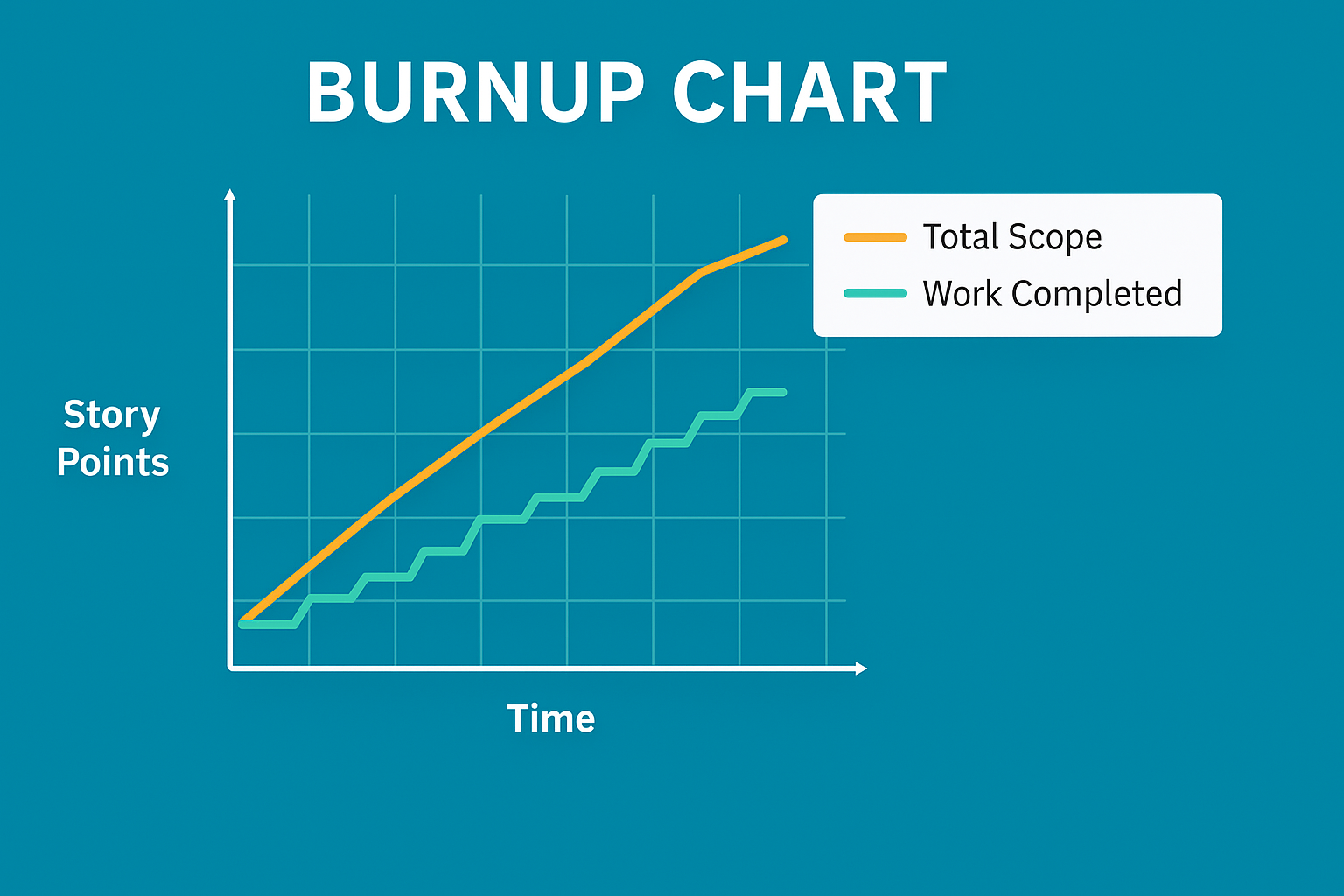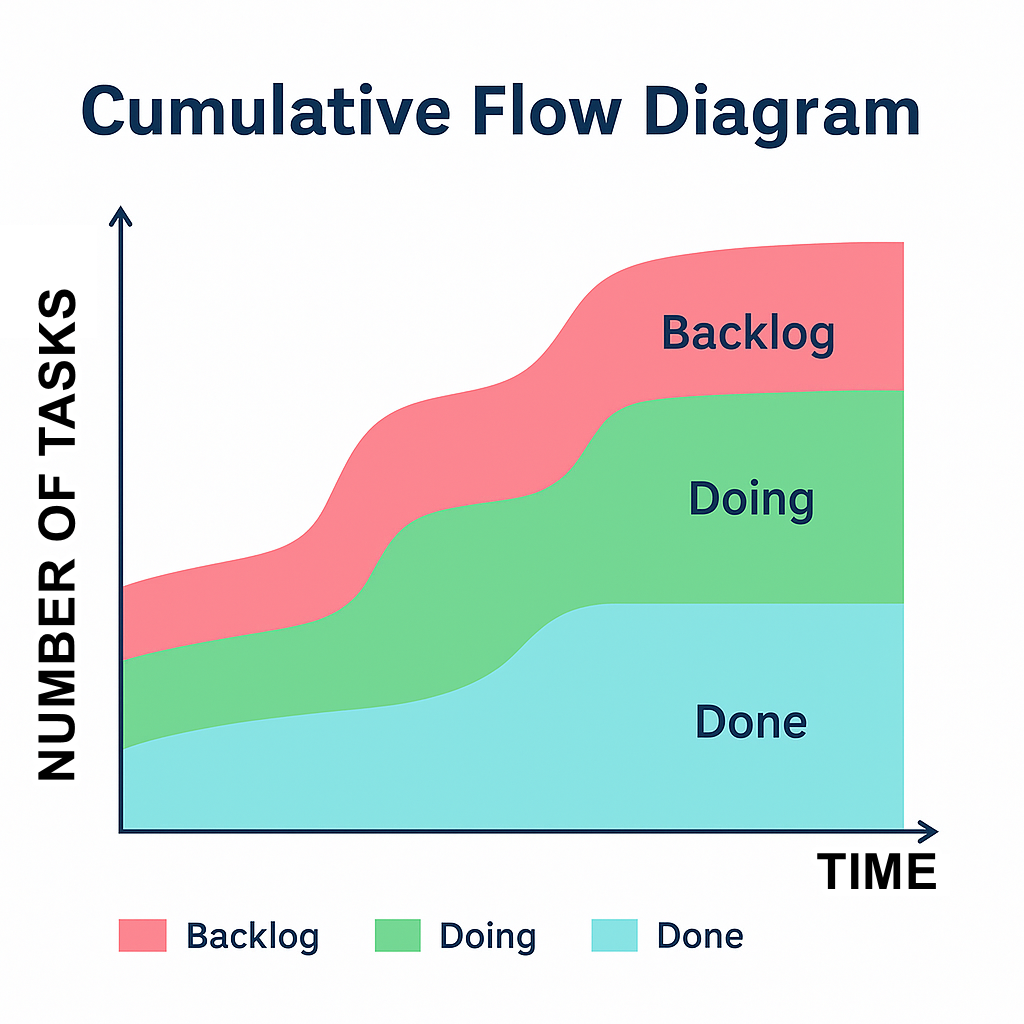CHAPTER 10: Project Execution and Monitoring
The Competitive Edge for Modern Project Managers
10.1 Sprint Execution Collaboration and Swarming
Introduction to Sprint Execution
After sprint planning ends, the team begins sprint execution. This is the phase where ideas turn into working product increments. The development team takes ownership of delivering the sprint goal. Unlike traditional project phases, sprint execution is not about following a rigid plan. Instead, it emphasizes collaboration, flexibility, and progress toward a clear outcome. The goal is to ensure the sprint backlog items move steadily toward completion within the sprint timebox.
What Happens During Sprint Execution
During sprint execution, the team works on items from the sprint backlog. Each backlog item is developed, tested, and integrated until it meets the agreed definition of done. The team organizes its daily work, deciding how tasks should be divided and who takes on what. The Scrum Master supports by removing obstacles, but the development team remains self-organizing. This is the phase where collaboration and communication become the lifeblood of progress.
Collaboration in Action
Collaboration means working together to deliver the sprint goal, rather than working in isolated silos. Developers, testers, and designers interact constantly, often pairing up or reviewing each other’s work. Collaboration also includes sharing knowledge across specialties, so the team avoids bottlenecks. For example, a tester might learn some automation, or a developer might support user experience work. This collective ownership increases quality and reduces delays.
What Is Swarming?
Swarming is a technique where multiple team members focus together on completing one high-priority backlog item before moving on. Instead of each person picking separate tasks, the team “swarms” on the most important work. This keeps items from getting stuck halfway and ensures valuable increments are delivered sooner. Swarming also fosters learning, as team members gain exposure to different skills and parts of the system.
Benefits of Swarming
Swarming creates several benefits for agile teams.
- First, it reduces work in progress, allowing the team to finish items faster.
- Second, it increases transparency, since everyone knows what the team is currently tackling.
- Third, it improves quality, as many eyes and hands contribute to the same feature.
- Finally, it builds a stronger team culture, because members learn to rely on and support each other during the sprint.
Balancing Individual and Team Work
While swarming is powerful, not every backlog item needs the whole team. Some tasks can be done individually or in pairs. The key is balance. Teams should swarm on critical, complex, or blocked items, while letting individuals handle smaller or well-defined work. The aim is to ensure that the most valuable increments are completed without overloading one person or leaving work unfinished.
Role of the Scrum Master During Execution
The Scrum Master supports sprint execution by fostering collaboration and protecting the team from external interruptions. A big part of this role is coaching the team to self-organize and use swarming when appropriate. The Scrum Master also helps remove impediments that may slow down execution, but avoids dictating how the work should be done. This balance empowers the team while keeping them aligned with Scrum principles.
Common Pitfalls in Sprint Execution
Some teams struggle with sprint execution when members work in silos, focusing only on their specialty. This can result in unfinished work piling up near the sprint’s end. Another pitfall is ignoring the sprint goal, where individuals work on tasks that are easy rather than those that deliver the highest value. Teams can also stumble if they resist collaboration or shy away from swarming. Overcoming these issues requires trust, transparency, and commitment to team outcomes.
Sprint Execution in the Bigger Picture
Sprint execution is not an isolated activity. It connects directly with other Scrum events such as the daily scrum, sprint review, and retrospective. Effective execution ensures that when the sprint ends, the team has a potentially shippable product increment ready to show stakeholders. By focusing on collaboration and swarming, teams increase their chances of meeting the sprint goal and delivering real value with every iteration.
Conclusion
Sprint execution is where the heartbeat of Scrum is most visible. Collaboration and swarming transform a group of individuals into a high-performing team. When teams focus on finishing work together, they build trust, deliver value faster, and learn continuously.
10.2 Daily Scrum and Task Boards
Introduction to the Daily Scrum
The daily scrum is a short, focused event where the development team inspects progress toward the sprint goal. It usually lasts fifteen minutes and is held at the same time and place each working day. The purpose is not to report to the Scrum Master but for the team to synchronize their work, identify impediments, and adjust plans. This daily rhythm keeps everyone aligned and aware of what is happening in the sprint.
Purpose and Focus of the Daily Scrum
The daily scrum has one central purpose: to increase the likelihood of meeting the sprint goal. Team members answer key questions such as what progress has been made, what is planned for today, and what obstacles may block progress. The discussion is about collaboration, not individual status reporting. When used correctly, the daily scrum fosters accountability, transparency, and adaptability in just a few minutes.
How the Daily Scrum Works
In a daily scrum, each team member shares updates about their work. The team then adapts the sprint plan for the next twenty-four hours. The Scrum Master ensures that the event takes place, but it is the development team that drives the conversation. If deeper technical discussions are needed, they are scheduled right after the meeting to keep the event brief and focused. This discipline ensures the team can inspect and adapt daily without losing valuable time.
Benefits of the Daily Scrum
Holding a daily scrum produces several benefits. First, it increases visibility, so everyone knows what others are working on. Second, it promotes early detection of risks or blockers. Third, it encourages collaboration, as team members often volunteer to help one another. Finally, it reinforces team accountability, since each person is making commitments in front of their peers. These small but regular check-ins build momentum throughout the sprint.
Introduction to Task Boards
A task board is a visual tool that helps the team manage sprint backlog items during execution. It shows the status of each task, usually in columns such as “To Do,” “In Progress,” and “Done.” Task boards can be physical, like sticky notes on a wall, or digital, using software such as Jira or Trello. The main purpose is to make progress transparent and visible to everyone involved in the sprint.
Low-Tech, High-Touch Boards
Many teams start with low-tech, high-touch task boards. These are simple boards on a wall with sticky notes or index cards. The tactile act of moving a note from “In Progress” to “Done” provides a sense of accomplishment. Advantages include simplicity, no learning curve, and constant visibility in the team’s workspace. Disadvantages appear in distributed or remote teams, where physical boards cannot be shared easily. They can also become cluttered if not maintained. Still, for co-located teams, physical boards are often the most engaging option.

Stories or Tasks on the Board?
Teams often wonder whether to place user stories or tasks on their board. In Scrum, it is common to show tasks, since the sprint backlog is broken into tasks that move daily. Each task belongs to a user story and flows across the board until completed. Some Agile teams, especially those practicing Kanban, place stories directly on the board to limit work in progress at the story level. The choice depends on context. For Scrum teams, tasks are best for daily monitoring. For Kanban or hybrid teams, tracking at the story level can be more useful to show value delivery.
Using Task Boards Effectively
Task boards work best when kept simple and updated frequently. Each backlog item or task is represented with a card or sticky note, and items move across columns as work progresses. By glancing at the board, the team can instantly see the flow of work and any bottlenecks. A cluttered or outdated board, however, reduces trust and can mislead the team. Therefore, updating the board is a shared responsibility, not left to one person.
How Task Boards Support the Daily Scrum
Task boards and daily scrums are natural partners. The board provides a shared visual reference during the discussion, helping the team quickly spot blocked items or uneven workloads. For example, if several tasks remain in “In Progress” without moving, the team may decide to swarm on those items. The board keeps the conversation grounded in actual progress, rather than vague updates. This combination creates both clarity and accountability.
Transparency and Flow
Task boards bring transparency to sprint execution. By limiting the amount of work in progress, they help the team focus on finishing tasks rather than starting too many. This improves flow and reduces the risk of incomplete work at the end of the sprint. Task boards also provide stakeholders with confidence, as they can see progress without interrupting the team for updates. Transparency ensures that everyone is aligned and working toward the same outcome.
Common Pitfalls
Several pitfalls can weaken daily scrums and task boards. Some teams treat the daily scrum as a status report to the Scrum Master, which undermines self-organization. Others let the meeting run long with problem-solving discussions. On task boards, some teams forget to update cards, creating a false picture of progress. Another mistake is tracking too much detail, filling the board with notes that obscure the big picture. Avoiding these pitfalls requires discipline, clarity of purpose, and a commitment to transparency.
Conclusion
The daily scrum and task boards are simple but powerful practices that keep a sprint on track. By inspecting and adapting every day, teams maintain alignment, uncover blockers early, and build trust. Low-tech boards with sticky notes can engage co-located teams, while digital tools extend transparency across distributed teams. Whether tracking tasks in Scrum or stories in Kanban, the principle remains the same: make work visible and manageable. Together, these tools transform sprint execution into a transparent, collaborative process.
10.3 Monitoring Progress
Introduction to Agile Monitoring
Agile teams need visibility into how their work is progressing during the sprint and across the project. Instead of relying on lengthy reports, agile uses simple charts that make progress easy to understand at a glance. The three most common charts are the burndown chart, the burnup chart, and the cumulative flow diagram. Each one shows a different perspective on progress and together they help teams, stakeholders, and product owners make better decisions.
The Burndown Chart
A burndown chart shows how much work remains in the sprint or release over time. The vertical axis represents effort, often measured in story points or hours. The horizontal axis represents days in the sprint or iterations in a release. The chart “burns down” as the team completes work. Ideally, the line slopes smoothly toward zero. If the line is flat, it signals that work is not being completed. The burndown is simple, clear, and highly motivating for teams.

Advantages and Limitations of Burndown
Burndown charts are easy to read and give a quick snapshot of progress. They show whether the team is on track to finish the sprint backlog. However, they also have limitations. Burndown only shows remaining work, not how much has been achieved. It also cannot explain why progress is off track. A flat line could mean blocked tasks, scope creep, or underestimated complexity. To address these gaps, teams often use burnup charts alongside burndowns.
The Burnup Chart
A burnup chart shows both completed work and total scope. The vertical axis represents effort, while the horizontal axis shows time. One line tracks cumulative work completed, while another shows the total scope. The gap between the lines reveals progress toward the goal. If scope changes during the sprint or release, the total scope line shifts, making scope creep visible. Burnup charts tell a fuller story than burndowns because they highlight both progress and changing targets.

Advantages and Limitations of Burnup
Burnup charts provide transparency about scope changes, something burndowns cannot show. They clearly demonstrate progress toward completion, even if the goalposts move. However, burnups can appear more complex to stakeholders unfamiliar with agile charts. Teams need to explain them well, especially when presenting to non-technical audiences. Despite this, burnups are powerful tools for aligning expectations and building trust.
The Cumulative Flow Diagram
The cumulative flow diagram, often called CFD, shows the state of work items across different stages over time. The chart has colored bands for columns such as “To Do,” “In Progress,” and “Done.” As work moves across these stages, the bands expand or contract. A healthy CFD shows steady flow, with each band growing and shrinking consistently. If the “In Progress” band keeps expanding, it signals bottlenecks or too much work in progress. CFDs are especially useful for Kanban teams, but Scrum teams can also benefit.

Advantages and Limitations of Cumulative Flow
Cumulative flow diagrams provide deep insight into flow and bottlenecks. They highlight whether the team is finishing work at the same rate it is starting. They also support forecasting by showing long-term trends. On the downside, CFDs can look confusing to beginners. Reading them requires training and practice. Still, once teams understand CFDs, they become one of the most powerful agile monitoring tools available.
Choosing the Right Chart
Teams do not need to use every chart for every project. Burndown charts are best for daily tracking in Scrum sprints. Burnup charts work well for showing stakeholders both progress and scope changes in releases. Cumulative flow diagrams are excellent for continuous monitoring and identifying bottlenecks in flow-based systems. The choice depends on context, but many teams use a combination to balance simplicity and depth.
Common Pitfalls in Agile Monitoring
One common pitfall is treating charts as management tools for control rather than team tools for insight. Charts should help the team adapt, not punish them for variance. Another mistake is failing to update charts daily, which makes them useless for decision-making. Teams should also avoid tracking vanity metrics. The real goal is delivering value, not simply following a chart line. Charts must serve learning and improvement, not micromanagement.
Conclusion
Burndown, burnup, and cumulative flow diagrams are simple but powerful ways to monitor progress. They make invisible work visible, highlight risks early, and keep stakeholders informed. Burndowns motivate daily progress, burnups reveal scope shifts, and CFDs uncover flow issues. Used together, these charts give teams a balanced view of where they are and what needs attention.
10.4 Managing Change During Sprints
Introduction to Change in Agile
Change is a natural part of any project. Customer needs evolve, markets shift, and technology moves quickly. Agile embraces change as a source of opportunity rather than a disruption. However, when a sprint is underway, the team must balance flexibility with focus. Managing change during sprints is about responding wisely, without losing sight of the sprint goal or overwhelming the team with shifting priorities.
The Sprint Goal as a Guiding Anchor
The sprint goal provides clarity about what the team must achieve during the sprint. When new requests or unexpected changes arise, the sprint goal acts as the anchor. The team can ask: does this change support the sprint goal? If it does, adjustments may be considered. If it does not, the change is deferred to the product backlog for future prioritization. This prevents the sprint from becoming chaotic while keeping the team aligned with delivering value.
Change in the Scrum Framework
In Scrum, changes to the sprint backlog are generally not welcome once a sprint has started. The idea is to protect the team’s focus and create stability during the sprint. However, this is not a hard-core rule. Urgent issues, such as critical defects, must be addressed immediately. The Scrum framework acknowledges that reality sometimes demands adaptation. The product owner and team work together to decide how to handle these exceptions while still respecting the sprint goal.
Other Frameworks and Styles
Not all agile frameworks treat change the same way. Kanban, for example, allows continuous change and reprioritization of work items throughout the flow. Some hybrid approaches blend Scrum’s sprint stability with Kanban’s flexibility. The key is to adapt your style to fit your organization’s culture and your customer’s needs. The ultimate goal is not to follow rules blindly, but to deliver the most value to both the business and the customer.
Sources of Change During a Sprint
Change can come from many directions. Customers may shift priorities based on market conditions. Stakeholders may uncover new requirements. Technical discoveries during development may create the need for rework. Even external events, such as new regulations, can affect sprint work. Recognizing where change originates helps teams decide how best to respond. Not every change is urgent, and some are better handled in upcoming sprints.
Who Decides on Changes?
In Scrum, the product owner is responsible for managing the product backlog and prioritizing work. When change requests appear mid-sprint, the product owner collaborates with the team to decide whether they should be addressed immediately or deferred. The development team provides input on technical feasibility and impact. The Scrum Master ensures the process is followed and that changes do not derail the sprint. This shared decision-making ensures balance between responsiveness and focus.
When to Accept Change in a Sprint
There are times when accepting change mid-sprint makes sense. For example, if a critical defect is discovered that blocks delivery, the team must address it immediately. If market conditions shift dramatically, a sprint backlog item may be swapped out to keep the product competitive. However, these cases should be rare. Most changes are better placed in the backlog for future sprints, preserving the stability of current work.
When to Defer Change
Not every request needs immediate attention. When new ideas or features arise that are valuable but not urgent, they belong in the product backlog. Deferring these changes ensures the team finishes what they committed to while still capturing future opportunities. This also helps stakeholders see that their input is valued, even if it cannot be delivered right away. Deferment is a healthy way to balance adaptability with reliability.
Techniques for Handling Change
Several techniques help teams manage change effectively. Timeboxing ensures the team has a short horizon, making it easier to adapt at the next sprint boundary. Backlog refinement sessions create space for discussing new ideas outside of sprint execution. Visual tools, such as task boards or cumulative flow diagrams, make the impact of changes more visible. Finally, clear team agreements, such as the definition of done, protect against last-minute scope creep.
Agile vs. Traditional Change Control
In traditional project management, changes often require lengthy approval processes and formal documentation. Agile handles change more lightly, relying on conversations, backlog adjustments, and prioritization. This reduces delay and keeps focus on value delivery. However, agile does not mean anything goes. The discipline of respecting sprint goals and using backlog prioritization ensures that flexibility does not become chaos.
Common Pitfalls in Managing Change
- One pitfall is allowing stakeholders to push new requests directly onto the team mid-sprint, bypassing the product owner.
- Another is teams accepting every change without considering impact, leading to unfinished work.
- A third is resisting all change, which undermines agility.
Effective teams avoid these extremes by respecting roles, staying anchored to the sprint goal, and using the backlog as a holding place for future priorities.
Conclusion
Managing change during sprints is about balance. Scrum encourages stability, but exceptions can and do occur. Other frameworks embrace continuous change, and hybrid styles are possible. The important thing is to adapt your approach to deliver the most value to both the business and the customer. By anchoring decisions in the sprint goal, capturing non-urgent changes in the backlog, and keeping communication open, teams remain flexible without losing focus.
10.5 Removing Impediments and Supporting the Team
Introduction to Impediments
Even the best sprint plans encounter obstacles. In Scrum, these obstacles are called impediments. An impediment is anything that slows down or blocks the team from achieving its sprint goal. Examples include technical issues, unclear requirements, resource shortages, or even organizational politics. Identifying and removing impediments quickly is essential for keeping the team productive and focused on delivering value.
The Scrum Master’s Role
The Scrum Master is often described as the team’s “impediment remover.” This does not mean solving every problem personally, but rather ensuring impediments are visible and addressed. The Scrum Master coaches the team to handle what they can, shields them from external distractions, and escalates issues that require organizational support. By doing so, the Scrum Master protects the team’s focus and nurtures a culture of continuous improvement.
The Team’s Responsibility
While the Scrum Master plays a key role, impediment management is not their job alone. The development team must raise issues openly and take ownership of solving problems within their control. For example, if testing is falling behind, team members may pair up to complete tasks faster. Shared accountability ensures that impediments are not hidden or ignored. A transparent team culture helps everyone address problems early, before they become critical.
Types of Impediments
Impediments can take many forms. Technical impediments include broken tools, integration failures, or missing environments. Process impediments may involve unclear acceptance criteria or bottlenecks in approvals. People-related impediments could be a lack of skills, conflicts within the team, or external dependencies. Organizational impediments include rigid hierarchies, delayed decision-making, or resource shortages. Recognizing these categories helps teams and Scrum Masters respond effectively.
Supporting Team Autonomy
Removing impediments is not just about fixing problems—it is about supporting the team’s autonomy. The Scrum Master should empower the team to solve what they can, rather than stepping in too quickly. Encouraging collaboration, knowledge sharing, and swarming builds resilience. Over time, the team becomes more self-reliant, requiring fewer external interventions. This shift increases both speed and confidence.
Tools and Techniques
Several tools can support impediment management. Impediment logs track open issues and ensure they are not forgotten. Daily scrums provide a natural forum for raising impediments, keeping the discussion short and focused. Visual boards can display blocked tasks, making obstacles transparent. Retrospectives are valuable for identifying recurring impediments and designing long-term solutions. These practices create a cycle of identifying, addressing, and learning from obstacles.
Common Pitfalls in Managing Impediments
A common pitfall is when team members hide impediments out of fear of blame. Another is when the Scrum Master takes on too much, becoming a bottleneck. Some organizations also ignore systemic impediments, such as slow approval processes, because they seem too difficult to fix. These pitfalls reduce team performance and morale. Successful teams treat impediment management as shared responsibility and work persistently to improve the environment around them.
Organizational Support
Not all impediments can be solved at the team level. Some require changes at the organizational level. For example, delays in procurement may require leadership intervention, or lack of test automation may need investment in new tools. The Scrum Master acts as an advocate, raising these issues with managers and stakeholders. Over time, organizations that listen and adapt create an environment where agile teams can truly thrive.
The Bigger Picture of Impediment Removal
Impediment removal is more than firefighting. It is about building a culture where problems are surfaced, addressed, and learned from. Each impediment removed is a step toward smoother flow and higher value delivery. Supporting the team in this way reinforces agile principles of transparency, collaboration, and continuous improvement. When the team feels supported, they are more engaged, creative, and willing to take ownership of outcomes.
Conclusion
Every agile team faces obstacles, but strong teams see them as opportunities to improve. The Scrum Master leads by enabling, not controlling, and the team shares responsibility for solving problems. Together, they create an environment where impediments are surfaced quickly, addressed effectively, and rarely allowed to linger. This focus on support and problem-solving strengthens the team’s autonomy and accelerates value delivery.
10.6 Using AI to Monitor and Support Execution
Introduction
During sprint execution, teams rely on charts like burndown and burnup to track progress. These visuals help answer a simple question: are we moving toward the sprint goal? Traditionally, creating and updating these charts takes effort. With artificial intelligence, teams can generate them instantly, experiment with scenarios, and receive clear explanations. This allows more time for conversation and decision-making, rather than manual reporting.
The AI Prompt
Here is a practical example of what you might ask an AI tool: “Given a sprint backlog of 50 story points and 10 days, create both a burndown and a burnup chart. Explain the differences in interpretation.” With this single prompt, the AI can produce two charts that show progress from different perspectives, along with explanations you can share with the team.
AI-Generated Burndown Chart
The burndown chart shows remaining story points across the 10 sprint days. The line drops as the team completes work, ideally sloping smoothly toward zero. If the line flattens, it signals stalled progress. AI makes it easy to visualize this day-by-day, without manual charting. This helps teams quickly see if they are on track to finish the sprint backlog.
AI-Generated Burnup Chart
The burnup chart shows cumulative work completed against the total scope of 50 points. One line rises as tasks are finished, while another stays fixed at 50. If scope changes during the sprint, the top line adjusts, making scope creep visible. The burnup chart provides more context than burndown, showing both achievement and changes to the target. AI explains these differences clearly, so even stakeholders new to agile can understand.
Benefits of Using AI
By using prompts like this, teams save time, gain instant visualizations, and receive clear explanations. AI does not replace agile practices, but it accelerates monitoring and helps teams focus on conversations rather than chart-building. Most importantly, it makes agile data transparent, so everyone—from developers to executives—can see progress and adapt as needed.
Conclusion
AI brings speed, clarity, and insight to execution monitoring. A simple prompt can generate charts, explain them, and highlight risks. By combining AI with agile practices, teams can work smarter and focus more on delivering value.
Agile Project Management & Scrum — With AI
Ship value sooner, cut busywork, and lead with confidence. Whether you’re new to Agile or scaling multiple teams, this course gives you a practical system to plan smarter, execute faster, and keep stakeholders aligned.
This isn’t theory—it’s a hands-on playbook for modern delivery. You’ll master Scrum roles, events, and artifacts; turn vision into a living roadmap; and use AI to refine backlogs, write clear user stories and acceptance criteria, forecast with velocity, and automate status updates and reports.
You’ll learn estimation, capacity and release planning, quality and risk management (including risk burndown), and Agile-friendly EVM—plus how to scale with Scrum of Scrums, LeSS, SAFe, and more. Downloadable templates and ready-to-use GPT prompts help you apply everything immediately.
Learn proven patterns from real projects and adopt workflows that reduce meetings, improve visibility, and boost throughput. Ready to level up your delivery and lead in the AI era? Enroll now and start building smarter sprints.
Launch your Agile career!
HK School of Management helps you master Agile and Scrum—faster. Learn practical playbooks, AI-powered prompts, and real-world workflows to plan smarter, deliver sooner, and keep stakeholders aligned. For the price of lunch, you’ll get templates, tools, and step-by-step guidance to level up your projects. Backed by our 30-day money-back guarantee—zero risk, clear path to results.
Learn More HKSM
HKSM
